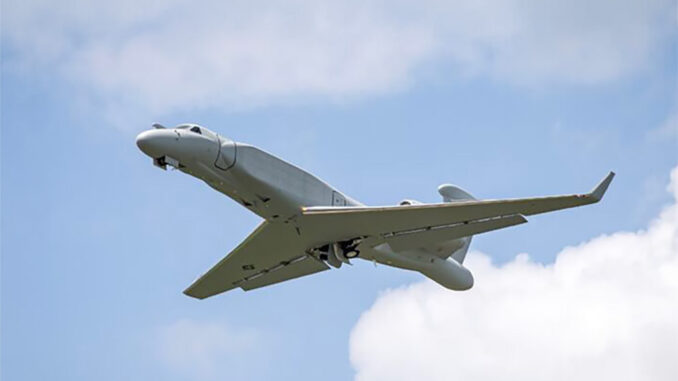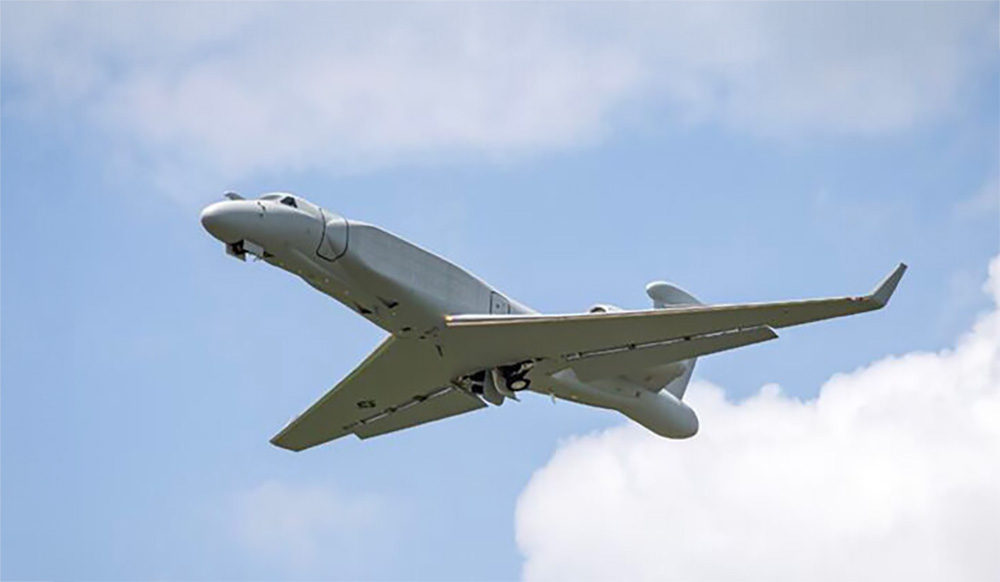
Italy is investing in the expansion of its fleet of special mission aircraft, including CAEW, AEA and AISREW platforms.
Italy continues to modernise and expand its fleet of Special Mission Aircraft (SMA). In 2023, it has decided to upgrade a fifth Gulfstream G-550 to the Conformal Airborne Early Warning (CAEW) platform, bringing the total number of these aircraft in the Italian Air Force to five. In addition, Italy has launched the conversion of two G-550 aircraft to the Airborne Electronic Attack (AEA) configuration, and has added an option for a third aircraft. At the same time, Italy is planning to acquire two newAISREW platforms for surveillance and electronic warfare missions. These acquisitions are part of the P-MMMS multi-mission programme, with overall funding of more than €3 billion.
Expansion of Italy’s CAEW fleet
Italy is expanding its fleet of Conformal Airborne Early Warning (CAEW) aircraft, which are at the heart of its battlefield surveillance and management capabilities. These aircraft, based on the Gulfstream G-550 platform, provide extensive surveillance using on-board sensors and command and control systems. In 2023, the Italian Ministry of Defence has launched the conversion of a fifth G-550 aircraft to CAEW configuration, in addition to the two aircraft already in service and the two others currently being acquired.
Italy’s CAEW programme is part of an overall budget estimated at €1.2 billion, financed as part of the P-MMMS multi-mission programme. The two new CAEW aircraft are being modified to incorporate advanced radar systems, communications systems and other sensors required for real-time surveillance missions. These improvements will enhance the Italian army’s air surveillance and detection capabilities, both for national missions and for operations within NATO.
The CAEW aircraft are equipped with AESA radar and secure communications systems, enabling them to provide extensive radar coverage and monitor air and ground movements over vast areas. These aircraft play a crucial role in crisis management, air defence and the coordination of complex military operations.
The introduction of Electronic Attack Capabilities (EAC)
As well as strengthening its CAEW fleet, Italy is venturing into the field of airborne electronic attack (AEA). Two G-550 aircraft are being upgraded to become AEA platforms, capable of conducting electronic warfare missions by disrupting or destroying enemy communications and radar systems. This capability is crucial in modern military operations, where the control of electromagnetic frequencies plays a decisive role in the success of missions.
The Italian AEA aircraft are based on the US Air Force’s Compass Call platform, a system renowned for its performance in electronic warfare. In December 2023, L3Harris was awarded a contract worth €289.4 million** for the initial modification of these aircraft, which will include the integration of advanced electronic systems capable of jamming enemy communications and neutralising radar defence systems.
Electronic attack capabilities can perturb communications networks, reduce the coordination of opposing forces and weaken their defence systems. The introduction of these capabilities strengthens Italy’s position within NATO as a key partner in electronic warfare and the alliance’s joint operations.

Acquisition of AISREW platforms
As part of the acquisition of new special mission aircraft, Italy is also acquiring two AISREW (Airborne Intelligence, Surveillance, Reconnaissance, and Electronic Warfare) platforms. These aircraft are designed to provide intelligence and electronic warfare capabilities for surveillance and strategic reconnaissance missions. The AISREWs will be assigned to the Italian Air Force’s 14/71 squadron and will be integrated into joint operations with the Italian Ministry of Defence’s Joint Intelligence Centre.
The AISREW model selected for Italy is similar to the MC-55A Peregrine used by Australia. This model incorporates advanced sensors such as the Leonardo AESA Osprey 50 radar and the L3Harris COMINT Rio system, enabling large-scale aerial surveillance and electronic warfare operations. These aircraft will also be equipped with encrypted communication systems and an electronic protection system to prevent any hostile interception.
In terms of funding, the AISREW programme is worth $500 million (around €470 million), with contracts awarded to L3Harris for systems integration and aircraft modifications. The arrival of these aircraft should considerably enhance Italy’s surveillance and electronic warfare capabilities, particularly in the strategic areas of Europe and the Mediterranean.
Consequences and prospects for Italian defence
The reinforcement of Italy’s air capabilities, with the acquisition of the CAEW, AEA and AISREW platforms, marks a major step in the evolution of the Italian armed forces. The introduction of these sophisticated technologies gives Italy greater flexibility in military operations, while strengthening its role within NATO. The ability to conduct long-term surveillance and electronic warfare missions without recourse to traditional air defence systems is a considerable strategic advance.
Italy is thus positioning itself as a key player in strengthening European security and NATO’s defence, particularly against a backdrop of growing geopolitical tensions in Eastern Europe. The new aircraft are scheduled to enter service between 2024 and 2030, offering the prospect of continued modernisation of the Italian air force.
Beyond the technological gains, these acquisitions also have economic repercussions. The contracts awarded to L3Harris, Leonardo, and other companies in the defence sector are stimulating national and international industry, creating technological development opportunities for Italy.
War Wings Daily is an independant magazine.